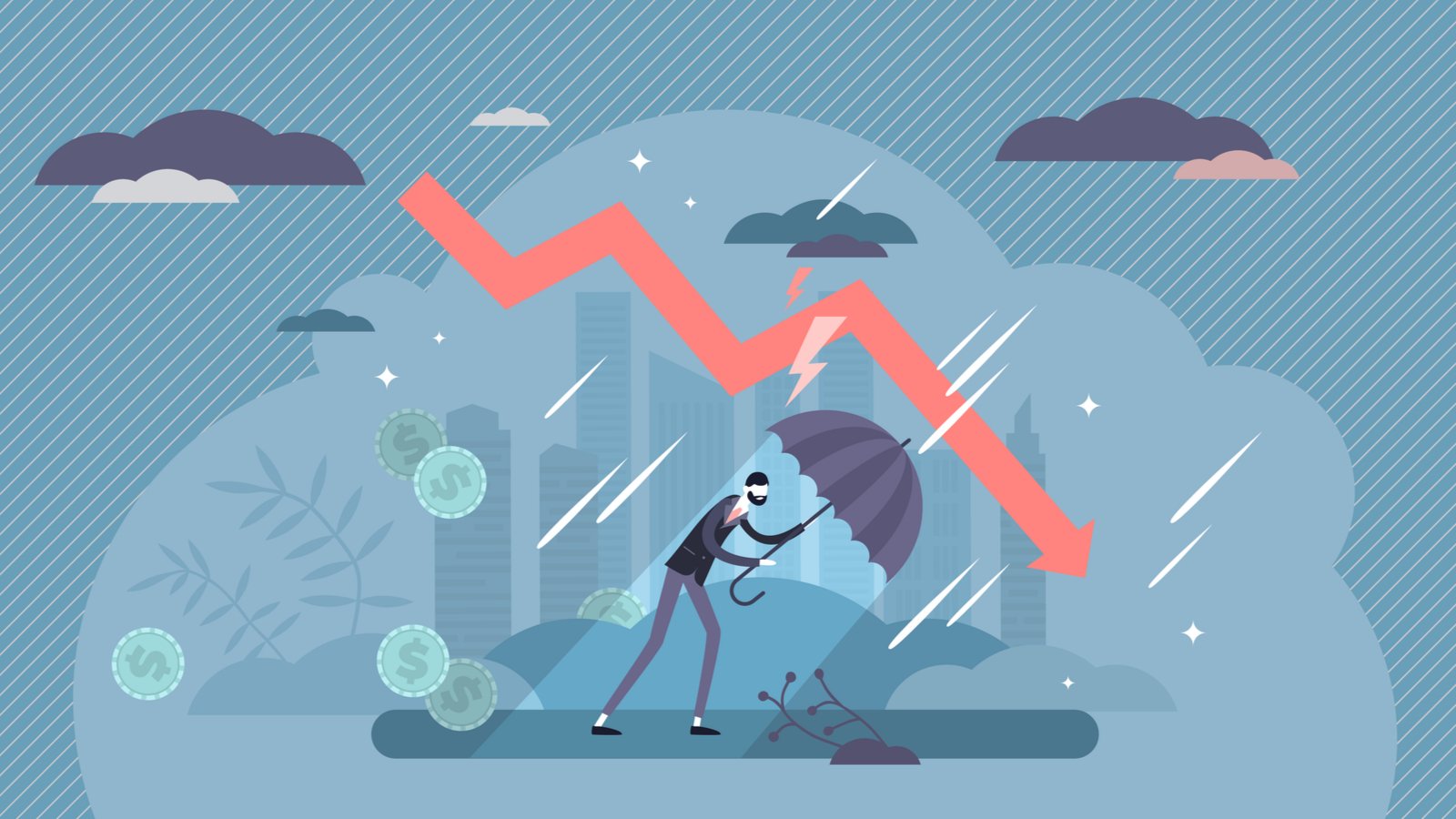Economics
Is a Recession Coming in 2023?
Source: VectorMine / Shutterstock
While some have already forgotten about last month’s banking crisis t0-be, according to the Federal Reserve, it may…

 Source: VectorMine / Shutterstock
Source: VectorMine / Shutterstock
While some have already forgotten about last month’s banking crisis t0-be, according to the Federal Reserve, it may be the harbinger of a recession later this year. Indeed, minutes from the Fed’s March meeting were released on Wednesday, which included a staff member’s presentation on eventual blowback stemming from the collapse of Silicon Valley Bank and related financial institutions. Will there be a 2023 recession?
Well, despite claims from Fed Vice Chair of Supervision Michael Barr that the banking industry is “sound and resilient,” other economists are less convinced. Per the presentation summary:
“Given their assessment of the potential economic effects of the recent banking-sector developments, the staff’s projection at the time of the March meeting included a mild recession starting later this year, with a recovery over the subsequent two years.”
Reasonably so, even prior to the banking crisis, recession fears have already been prominent this year. The Fed’s ceaseless rate hikes and quantitative tightening process has many economists primed and ready for an eventual collapse in unemployment and gross domestic product (GDP) growth.
In fact, per a February survey of economists by the National Association for Business Economics (NABE), 58% of 48 economists surveyed believe the country will enter a recession at some point this year. About 33% of these economists predict that a downturn will hit in the April quarter. Meanwhile, 21% “think it will start in the July-September quarter.”
The Fed has pulled no punches with its rate-hiking process. Even last month, in the heat of the banking crisis, the central bank opted to go through with a 25 basis point rate hike, the ninth increase this cycle. This marks the fastest pace of rate hikes since the 1980s. The Federal funds rate is now between 4.75% and 5%, the highest level since 2007.
Fears of a 2023 Recession Continue to Grow Amid Calls to End Rate Hikes
If you go by a common indicator for a recession, which is two consecutive quarters of negative GDP growth, the proof has long been in the pudding. Last summer, the U.S. actually met that technical indicator for a recession, recording its second-straight quarter of negative GDP. Fortunately, the dip was relatively short-lived, with production bouncing back just the next quarter.
Per the Fed’s last meeting, however, officials now expect annual GDP growth of only 0.4% through all of 2023. Given the first quarter’s projected 2.2% economic growth, this implies the country will have a notable reversal to production deeper in the year.
Some economists have already started motioning that the central bank should pause — or entirely end — its rate hike process in fear of a macroeconomic blowback.
KPMG Chief Economist Diane Swonk told CNBC’s “The Exchange” last week:
“The real risk now is that we up the ante, that the Fed overshoot[s] […] They don’t want to send the economy into a deep freeze, but you’re going to get a bit more chill I think than you’d like and a harder landing with the Fed continuing to fight inflation and the pipeline of tightening that we have in the credit system already.”
If you’re just looking at the standard economic indicators, it could be hard to see where the fuss is. After all, the U.S. added 236,000 jobs in March. The naysayers may argue this was worse than projections and the first jobs miss in 12 months. However, it still puts unemployment at a historically healthy 3.5%. Unfortunately, though, this sparks as much hope of achieving a soft landing as it does dread over economic deterioration to come.
“The Fed has sort of doubled down, even through financial market fragilities and additional tightening in the pipeline […] They’re going to continue to fight inflation and sort of try to divorce the idea of rate hikes from financial stability tools,” Swonk said.
On the date of publication, Shrey Dua did not hold (either directly or indirectly) any positions in the securities mentioned in this article. The opinions expressed in this article are those of the writer, subject to the InvestorPlace.com Publishing Guidelines.
With degrees in economics and journalism, Shrey Dua leverages his ample experience in media and reporting to contribute well-informed articles covering everything from financial regulation and the electric vehicle industry to the housing market and monetary policy. Shrey’s articles have featured in the likes of Morning Brew, Real Clear Markets, the Downline Podcast, and more.
More From InvestorPlace
- Buy This $5 Stock BEFORE This Apple Project Goes Live
- The Best $1 Investment You Can Make Today
- It doesn’t matter if you have $500 or $5 million. Do this now.
The post Is a Recession Coming in 2023? appeared first on InvestorPlace.
inflation
monetary
markets
reserve
policy
fed
central bank
monetary policy

Argentina Is One of the Most Regulated Countries in the World
In the coming days and weeks, we can expect further, far‐reaching reform proposals that will go through the Argentine congress.
Crypto, Crude, & Crap Stocks Rally As Yield Curve Steepens, Rate-Cut Hopes Soar
Crypto, Crude, & Crap Stocks Rally As Yield Curve Steepens, Rate-Cut Hopes Soar
A weird week of macro data – strong jobless claims but…
Fed Pivot: A Blend of Confidence and Folly
Fed Pivot: Charting a New Course in Economic Strategy Dec 22, 2023 Introduction In the dynamic world of economics, the Federal Reserve, the central bank…



















